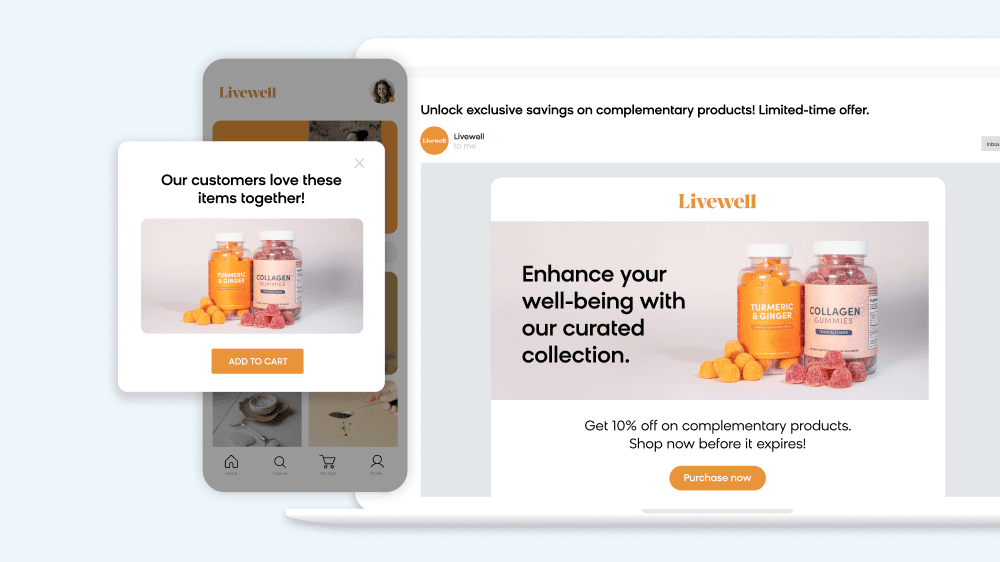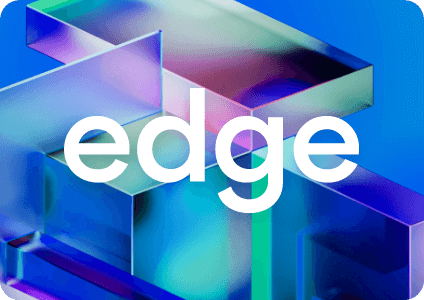AI is already a big part of most ecommerce businesses, helping them personalize recommendations, automate customer support, and elevate marketing results. But while generative AI has been a powerful tool for generating content and analyzing data, it still requires you to make the first move.
Agentic AI takes that burden off your shoulders. Instead of simply responding to prompts, it acts on its own. It analyzes customer behavior, adapts in real time, and manages complex tasks — all without human intervention.
These innovative AI capabilities can be a huge opportunity for you. By switching from reactive to proactive AI, you can make your business processes smoother, faster, and more efficient. In this article, we’ll show you how agentic AI operates and how it can help you automate key tasks, enhance customer experiences, and scale personalization like never before.
What Is Agentic AI?
As generative AI evolves, it’s reshaping how you can create smarter, more responsive experiences for your customers. One of the most notable advancements is agentic AI, which responds to inputs and actively takes action to achieve specific outcomes.
At its core, agentic AI is about taking initiative. Instead of simply reacting, AI-powered agents work toward clear goals. Agentic AI continuously perceives, reasons, acts, and learns — adapting to new data, solving problems, and improving its approach as it progresses.
For ecommerce professionals, this means less time spent manually managing tasks and more time spent refining strategies. With artificial intelligence automating key processes, you can focus your energy on high-level strategy and identifying areas to drive more impact.
What Are AI Agents?
AI agents are like digital assistants that can work autonomously. Through a combination of large language models (LLMs), natural language processing (NLP), and machine learning, they can tackle complex tasks, adjust their behavior, and work toward specific goals without needing you to tell them what to do.
These AI agents operate by observing what’s happening, processing that information, and making decisions on their own. They can also employ multiple AI agents to help carry out tasks.

For example, one AI agent may process the natural language request and understand what the objective is, then another AI agent will dig through vast amounts of data to find the right solution. From there, another AI agent can ensure a seamless connection with external APIs or other systems — all while a separate AI agent oversees and delegates tasks between them. Each agent has a clear purpose, and these AI agents learn from past results to improve future actions.
It’s also important to note how these AI agents fit into the bigger picture. Agentic AI is the framework that powers and coordinates these agents. It sets the overall strategy, helps each agent understand its role, and ensures they all work toward your bigger goals.
Think of agentic AI as the control system that brings everything together. If your ecommerce system were a smart home, each AI agent would be like a smart device, like your thermostat, lights, or appliances, working on its own task. And agentic AI would be the system managing them all, ensuring they function according to your preferences and overall goals.
How Agentic AI Is Different
If you’ve used AI to help write copy, organize data, or guide a customer through their journey, you’ve likely worked with traditional AI models. These tools are great at handling specific tasks and making your workflows faster and smarter, provided you know what to ask for.
But here’s the catch: these AI systems still operate within a confined workflow model. They wait for you to prompt them, then follow instructions and respond based on the patterns they’ve learned.
Agentic AI is different. It doesn’t wait for input. Instead, it takes action on its own based on the goals you set. That means it can take the lead, complete a series of actions, and adjust accordingly based on what it learns along the way.
Here’s what sets AI agents apart:
- Autonomy: They operate independently, so you don’t need to manage them daily
- Adaptability: They adjust based on new information, continually improving their actions
- Goal-oriented: Once AI agents have a goal, they’ll figure out the next steps and execute tasks to reach that goal
- Self-directed problem-solving: AI agents can solve problems without needing someone to guide them or provide specific instructions
This shift is important because it frees up your time. You don’t have to constantly monitor or adjust your systems. With agentic AI, you set the direction, and it can automate routine tasks (and even handle complex scenarios) with ease.
For example, imagine customer engagement drops for a particular segment. A traditional AI tool might flag the issue, but you’d still need to investigate, plan a reactivation campaign, and schedule it. An agentic AI system, on the other hand, would notice the drop, analyze the data, adjust the strategy, and create a ready-to-launch reengagement campaign for you to review.
This kind of decision-making and autonomy means your team can respond faster and more intelligently to what’s happening in real time.
Applications in Marketing Automation
Personalization at Scale
Delivering personalized experiences at scale isn’t easy, especially when customer behavior constantly changes. It can often feel like you’re always trying to keep up with new trends and shifts in preferences.
This is where agentic personalization makes a real difference. Instead of following static rules, it adapts in real time based on what your customers are doing.
As shoppers browse, click, or pause on a product, AI agents work in the background, learning from those actions and delivering the most relevant experiences across your website, email, or mobile.
For example, let’s say a customer is browsing skincare products. An AI agent, recognizing their interest based on previous behavior, can automatically personalize their homepage, send a targeted email, or trigger an in-session message, all without needing your manual input.
Bloomreach Engagement combines this intelligent personalization with real-time customer data, allowing you to create tailored campaigns across email, SMS, web, and mobile — all from a single platform.
Yves Rocher, a global beauty brand, applied this approach to great effect. The brand wanted to recommend the right products to every shopper, even first-time visitors with no previous data. Using Bloomreach’s AI, Yves Rocher created anonymous profiles as soon as someone landed on its site. As that person browsed, product recommendations updated instantly. And if the visitor later registered, all of that data carried over, powering future personalized campaigns.
As a result of these personalized experiences, shoppers were 17.5x more likely to click on a recommended product within the first minute and 11x more likely to make a purchase.
Streamlining Campaign Management
Campaign management can eat up more time than expected. From building journeys to running analyses, marketers often get stuck juggling tasks that take them away from strategy and creativity. That’s where agentic AI starts to show its real value.
By automating repetitive tasks, like setting up logic-heavy scenarios, generating reports, or connecting data across systems, agentic AI frees your team to focus on higher-impact work. With Bloomreach Engagement, we’re taking this a step further.
The next generation of Loomi AI in Engagement introduces a multi-agent system designed to streamline the entire marketing automation process, from campaign setup to optimization. Multiple agents work together behind the scenes to interpret your goals, design complex workflows, and connect everything across channels and platforms.
This setup allows you to describe what you want in natural language, like “create a multi-step abandoned cart journey for high-value customers,” and have autonomous agents handle the heavy lifting. You can then review the output, make changes, and launch an entire advanced campaign within hours instead of days or even weeks.
That kind of automation is already making a measurable difference.
Hornby Hobbies, a UK-based brand with a century-long history, recently expanded into direct-to-consumer ecommerce. With Bloomreach Engagement and Loomi Analytics, the brand streamlined its campaign process and began running data-driven promotions almost immediately. This allowed Hornby Hobbies to realize a 34% lift in email revenue within four months, as well as a 70% reduction in time spent building analytics reports.

Applications in Product Discovery
Autonomous Search
Search has always played a critical role in ecommerce. But traditional search — even systems powered by AI — require a lot of manual overhead and tweaking, making it easy for customers to miss what they’re really looking for.
With Bloomreach Discovery, you get an autonomous search solution that personalizes the entire shopping experience around the consumer instead of your brand’s products. It takes every click, search, purchase, return, and preference from a customer and incorporates this data into an evolving conversation. This makes the entire process faster, more accurate, and more aligned with what your customer actually wants.
Let’s say a customer searches for “organic skincare.” A traditional search engine will show results relevant to “organic skincare,” but will often stop there. Agentic AI systems, on the other hand, will use all the first-party and zero-party data they’ve gathered to tailor search results to each customer’s exact preferences.
So, with the search query “organic skincare,” agentic AI can recognize, based on all of a customer’s previous interactions, what the shopper is looking to solve (e.g., sensitive skin or clean ingredients) and curate results accordingly. It can even adjust what it shows based on in-session behavior and real-time data, like which products they click or how long they stay on a page.

Essentially, autonomous search doesn’t just react to a query like traditional search. It can anticipate customer needs, start conversations to get more information, and explain its reasoning. Plus, as AI agents gather more data, they’ll learn and get smarter with every interaction, saving you the trouble of manually tweaking search parameters.
Conversational Shopping
You know that moment when a shopper’s clicking through your site — browsing, interested, but clearly unsure? Maybe they’re comparing options or waiting for a sign that says, “Yes, this is the right one.”
That’s the moment a conversational AI agent can step in.
With agentic AI, you don’t have to wait for the customer to dig through FAQs or find your support chat. The system can read the signals, how they’re browsing, what they’re hovering on, and start a helpful, natural conversation. One that feels like you just brought your best store associate into your online store.
It can ask a clarifying question, recommend the right product, and surface details the customer may have missed — all in real time. What’s more, a conversational agent like Bloomreach Clarity lives beyond the chat window. You can embed Clarity directly in product pages, the checkout page, or even in the search bar, allowing your customers to start a conversation from anywhere on your site.
That’s exactly what TFG (The Foschini Group) did with Bash, its lifestyle ecommerce platform.
The brand wanted the online experience to feel more personal, so it set it up so that when someone viewed three or more product pages, Clarity would step in and start a conversation. TFG implemented Clarity during the busy Black Friday weekend and saw incredible results, including a 35.2% higher online conversion rate, 39.8% higher revenue per visit (RPV), and a 28.1% lower exit rate.
Ready To See What Agentic AI Can Do for You?
Agentic AI systems are helping marketers deliver personalized, high-performing experiences without the heavy lifting. It adapts in real time, handles repetitive tasks, and connects customers to the right products when it matters most.
With Bloomreach, you can use AI agents to completely transform the way you work. Powered by Loomi AI, the platform helps you launch campaigns faster, improve conversions through smarter personalization, and effortlessly scale customer experiences.
If you’re ready to reduce friction, boost results, and reclaim time for strategy, Bloomreach is purpose-built to help you do it.
See how Bloomreach can help you turn every customer interaction into a revenue-driving moment — visit our website to learn more.
















